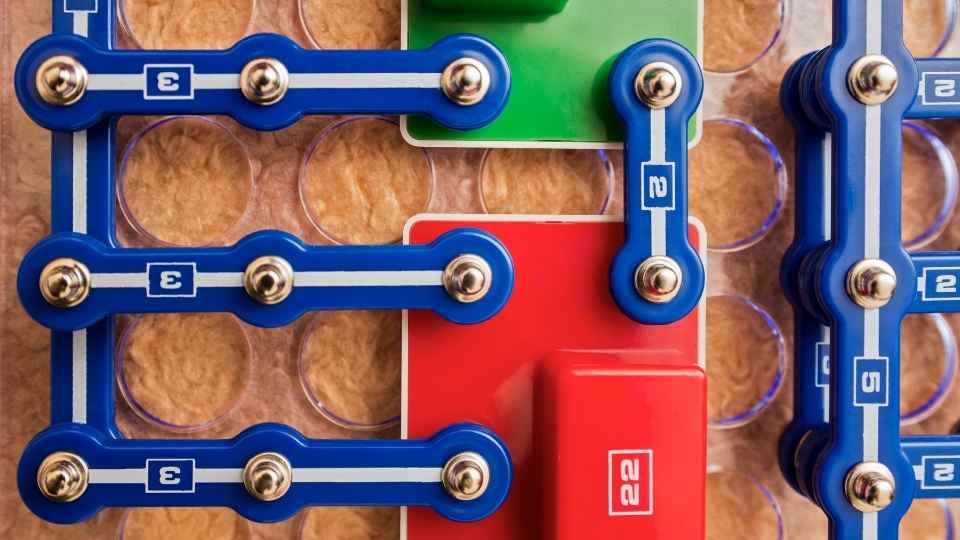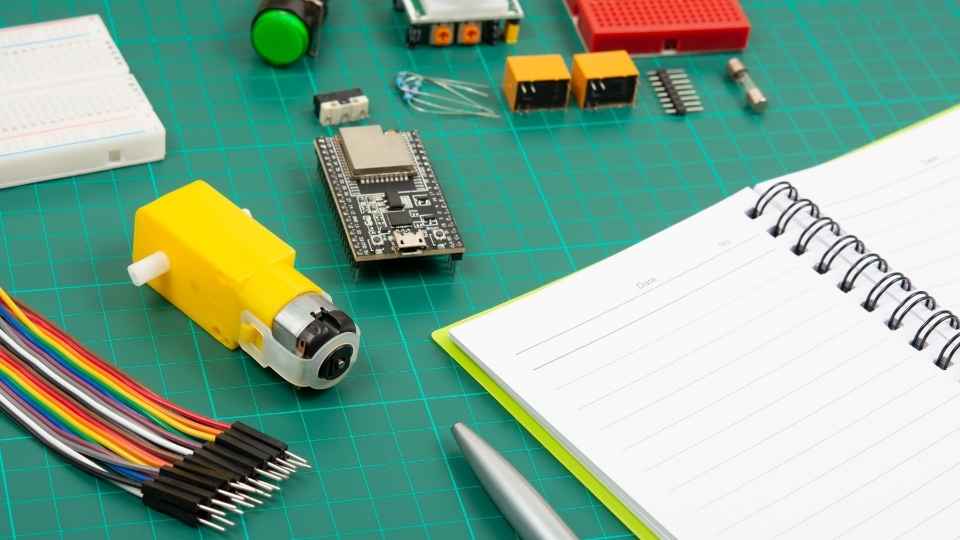
Raspberry Pi: the Future of DIY Computing?
Delve into the realm of revolutionary technology as we explore the rise of Raspberry Pi and its potential to reshape the world of do-it-yourself computing. With its impressive GPIO pins and versatile Rasbian OS, this single-board wonder has become a catalyst for inspiring DIY projects.
Join us on a journey that embraces the future, where Raspberry Pi empowers individuals with newfound freedom to create, innovate, and revolutionize the world of computing.
Key Takeaways
- Raspberry Pi has revolutionized the DIY computing movement with its affordable and versatile platform.
- The open-source nature of Raspberry Pi encourages collaboration and provides access to countless online resources and communities.
- Raspberry Pi's commitment to education and accessibility for beginners, as well as advanced features for experienced users, make it a popular choice for DIY projects.
- Single-board computers, like Raspberry Pi, play a crucial role in shaping the future of DIY computing by empowering individuals, pushing boundaries, and contributing to the DIY computing movement.
The Rise of Raspberry Pi in DIY Computing
The rise of Raspberry Pi in DIY computing has revolutionized the way enthusiasts and hobbyists approach building and programming their own devices. This credit card-sized single-board computer offers an affordable and accessible platform for individuals to explore their creativity and innovation in the world of technology. With its powerful capabilities, including a range of input/output options, wireless connectivity, and compatibility with various operating systems, Raspberry Pi has become a game-changer in the DIY community.
One of the key reasons behind its popularity is its open-source nature, which allows users to modify and customize the system according to their needs. The Raspberry Pi Foundation actively encourages collaboration and knowledge sharing among users by providing extensive documentation, forums, and online resources. This not only fosters a sense of freedom but also promotes learning and skill development.
Furthermore, Raspberry Pi's versatility enables it to be used in a wide range of projects such as home automation systems, media centers, robotics prototypes, and even weather stations. Its low power consumption makes it an eco-friendly choice for those looking to reduce energy usage.
Unleashing the Power of GPIO Pins With Raspberry Pi
Utilizing the GPIO pins on this versatile device can greatly expand its capabilities. The Raspberry Pi offers a range of GPIO (General Purpose Input/Output) pins that allow users to connect and control external devices. Here are four ways in which these GPIO pins can be utilized:

Interfacing with sensors: By connecting sensors to the GPIO pins, users can gather data from various sources such as temperature, humidity, or motion. This opens up possibilities for projects like home automation or environmental monitoring.
Controlling actuators: The GPIO pins can also be used to control motors, relays, or LEDs. This enables users to build devices that interact with the physical world, like robots or smart lighting systems.
Creating custom interfaces: With the flexibility of the GPIO pins, users can design their own input/output interfaces tailored to their specific needs. This could include buttons, switches, or displays.
Expanding storage options: By using the GPIO pins in conjunction with add-on boards or modules, users can increase storage capacity for their Raspberry Pi projects.
The ability to harness the power of the GPIO pins allows for endless possibilities and customization with the Raspberry Pi, making it an ideal choice for those looking for freedom and creativity in DIY computing endeavors.
Exploring the Versatility of Rasbian OS on Raspberry Pi
Exploring the versatility of Rasbian OS on the Raspberry Pi opens up a world of possibilities for customizing and optimizing computing projects. As an open-source operating system, Rasbian provides users with the freedom to modify and adapt their Raspberry Pi devices to suit their specific needs.
Whether it's setting up a media center, creating a home automation system, or building a retro gaming console, Rasbian offers a wide range of applications and tools that can be easily installed and configured. With its user-friendly interface and extensive online community support, even beginners can dive into the world of DIY computing without feeling overwhelmed.

Additionally, Rasbian is constantly updated by a dedicated team of developers, ensuring improved performance and compatibility with new hardware technologies. The flexibility offered by Rasbian OS truly makes it an ideal choice for those seeking creative freedom in their computing projects.
Raspberry Pi: Revolutionizing DIY Computing With Single-Board Technology
Raspberry Pi has become a game-changer in the world of DIY computing, thanks to its single-board technology.
This compact device has revolutionized the way enthusiasts and professionals alike approach projects, offering an affordable and versatile platform for various applications.
With its impressive capabilities and a thriving community of users, Raspberry Pi has sparked innovation and creativity by empowering individuals to explore new possibilities in electronics and computing.
Pi 4 Capabilities
The Pi 4 boasts impressive capabilities that make it a powerful tool for DIY computing. Here are four key features that contribute to its success:
Enhanced Performance: The Pi 4 is equipped with a Broadcom BCM2711 quad-core Cortex-A72 (ARM v8) processor, making it significantly faster than its predecessors. This enables smoother multitasking and quicker response times.
Increased Memory: With options of 2GB, 4GB, or even 8GB LPDDR4-3200 SDRAM, the Pi 4 offers ample memory for demanding tasks such as running multiple applications simultaneously or handling large datasets.

Connectivity Options: The Pi 4 includes dual-band Wi-Fi and Bluetooth 5.0, providing seamless wireless connectivity. Additionally, it has two USB 3.0 ports and two USB 2.0 ports for easy peripheral connections.
Graphics Capability: Featuring a VideoCore VI GPU with OpenGL ES support, the Pi 4 can handle high-resolution displays and graphics-intensive applications more efficiently than ever before.
Overall, the Pi 4's advanced specifications empower users to explore limitless possibilities in their DIY computing projects while maintaining the freedom to customize their experience as desired.
Popular Pi Projects
Moving on to the current subtopic of popular Raspberry Pi projects, it is worth exploring the diverse range of applications that this versatile platform offers. With its compact size and low cost, the Raspberry Pi has become a favorite among DIY enthusiasts and makers worldwide. From creating retro gaming consoles to home automation systems, the possibilities are virtually limitless.
One popular project involves transforming the Raspberry Pi into a media center by installing Kodi, an open-source media player software. This allows users to stream movies, TV shows, and music from various sources directly to their television screens.
Another notable project involves building a weather station using sensors connected to the Raspberry Pi. By collecting data on temperature, humidity, and atmospheric pressure, individuals can obtain real-time weather updates for their specific location.
Furthermore, with its GPIO (General Purpose Input/Output) pins, the Raspberry Pi can be utilized in robotics projects or as a home security system controller.

These examples merely scratch the surface of what can be achieved with a Raspberry Pi. The ability to tailor projects based on personal interests and needs makes it an ideal choice for those seeking creative freedom in their DIY endeavors.
Inspiring DIY Projects With Raspberry Pi
Several remarkable DIY projects have been developed by enthusiasts using the versatile Raspberry Pi. These projects showcase the endless possibilities that this single-board computer offers, empowering individuals to create and innovate.
Some inspiring examples include:
Home Automation Systems: Raspberry Pi can be used to control various aspects of a smart home, from lighting and temperature to security systems.
Media Centers: With the right software and peripherals, Raspberry Pi can transform into a media center capable of streaming movies, playing music, and even running retro gaming emulators.
Weather Stations: By connecting sensors to the Raspberry Pi, users can collect real-time weather data and display it on a customized dashboard.
Robotics Projects: The GPIO pins of the Raspberry Pi allow for easy integration with motors and sensors, making it an ideal platform for building robots or automated systems.

These projects demonstrate how Raspberry Pi is changing the landscape of DIY computing, offering freedom and flexibility for individuals to bring their ideas to life.
Embracing the Future: Raspberry Pi and the DIY Computing Movement
Embracing the potential of a single-board computer, enthusiasts have revolutionized the DIY computing movement with innovative projects and groundbreaking ideas. The Raspberry Pi, in particular, has emerged as a frontrunner in this field, offering an affordable and versatile platform for individuals to explore their creativity and expand their technical skills. With its compact size and low power consumption, the Raspberry Pi has opened up new possibilities for DIY computing enthusiasts to build everything from home automation systems to retro gaming consoles.
One of the key strengths of the Raspberry Pi lies in its open-source nature, which encourages collaboration and knowledge-sharing within the community. This has led to the development of countless online resources, forums, and communities dedicated to supporting users as they navigate their way through different projects. Furthermore, the Raspberry Pi Foundation's commitment to education has made it accessible for beginners while also providing advanced features for more experienced users.
As technology continues to evolve at a rapid pace, it is evident that single-board computers like the Raspberry Pi will play an increasingly crucial role in shaping the future of DIY computing. Their affordability and flexibility empower individuals with freedom and autonomy over their technological creations. Whether you are a hobbyist or a professional developer, embracing platforms like the Raspberry Pi allows you to push boundaries, experiment freely, and contribute meaningfully to this dynamic movement.
Frequently Asked Questions
What Are GPIO Pins and How Can They Be Used With Raspberry Pi?
GPIO pins, or General Purpose Input/Output pins, are used in Raspberry Pi to connect external devices. They can be configured as either input or output and allow for communication with sensors, actuators, and other electronic components.
Are There Any Limitations or Compatibility Issues With Using Rasbian OS on Raspberry Pi?
When using the Raspbian OS on a Raspberry Pi, it is important to consider potential limitations and compatibility issues. These may include hardware requirements, software dependencies, and compatibility with specific peripherals or applications.
When comparing Raspberry Pi to other single-board technologies in terms of performance and features, it is important to assess their respective specifications, capabilities, and compatibility with various applications.

Can You Provide Some Examples of Innovative DIY Projects That Have Been Created Using Raspberry Pi?
There have been numerous innovative DIY projects created using Raspberry Pi, showcasing its versatility and potential. These projects range from home automation systems to weather stations, demonstrating the wide array of possibilities offered by this technology.
How Is the DIY Computing Movement Evolving and What Role Does Raspberry Pi Play in Its Future Development?
The DIY computing movement continues to evolve, driven by a desire for freedom and innovation. Raspberry Pi plays a significant role in this development, providing affordable and versatile hardware that empowers individuals to create their own unique projects.
 Basic Electronics ConceptsEssential ToolsCircuit Design BasicsMicrocontrollersDIY Electronics ProjectsRoboticsPrivacy PolicyTerms And Conditions
Basic Electronics ConceptsEssential ToolsCircuit Design BasicsMicrocontrollersDIY Electronics ProjectsRoboticsPrivacy PolicyTerms And Conditions
